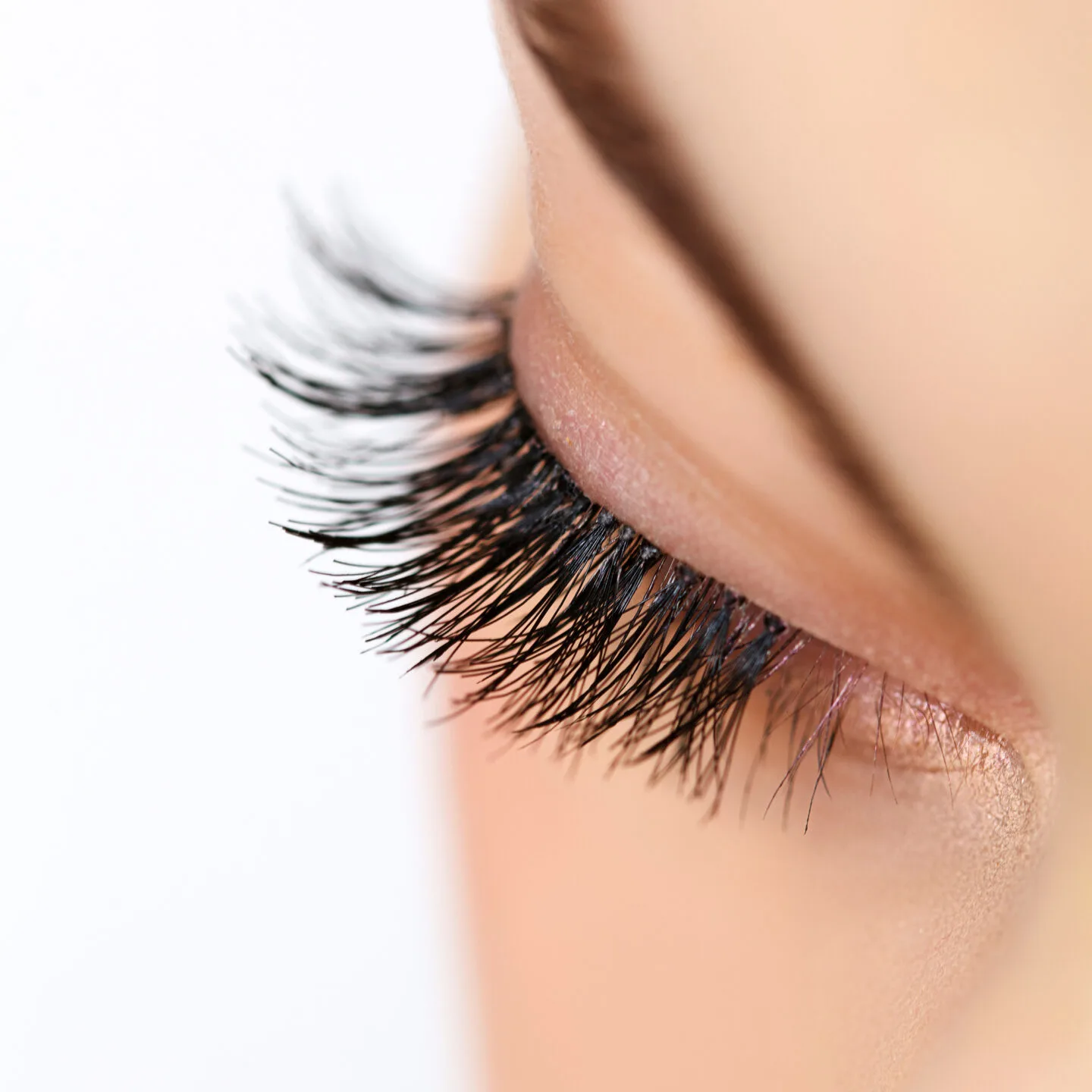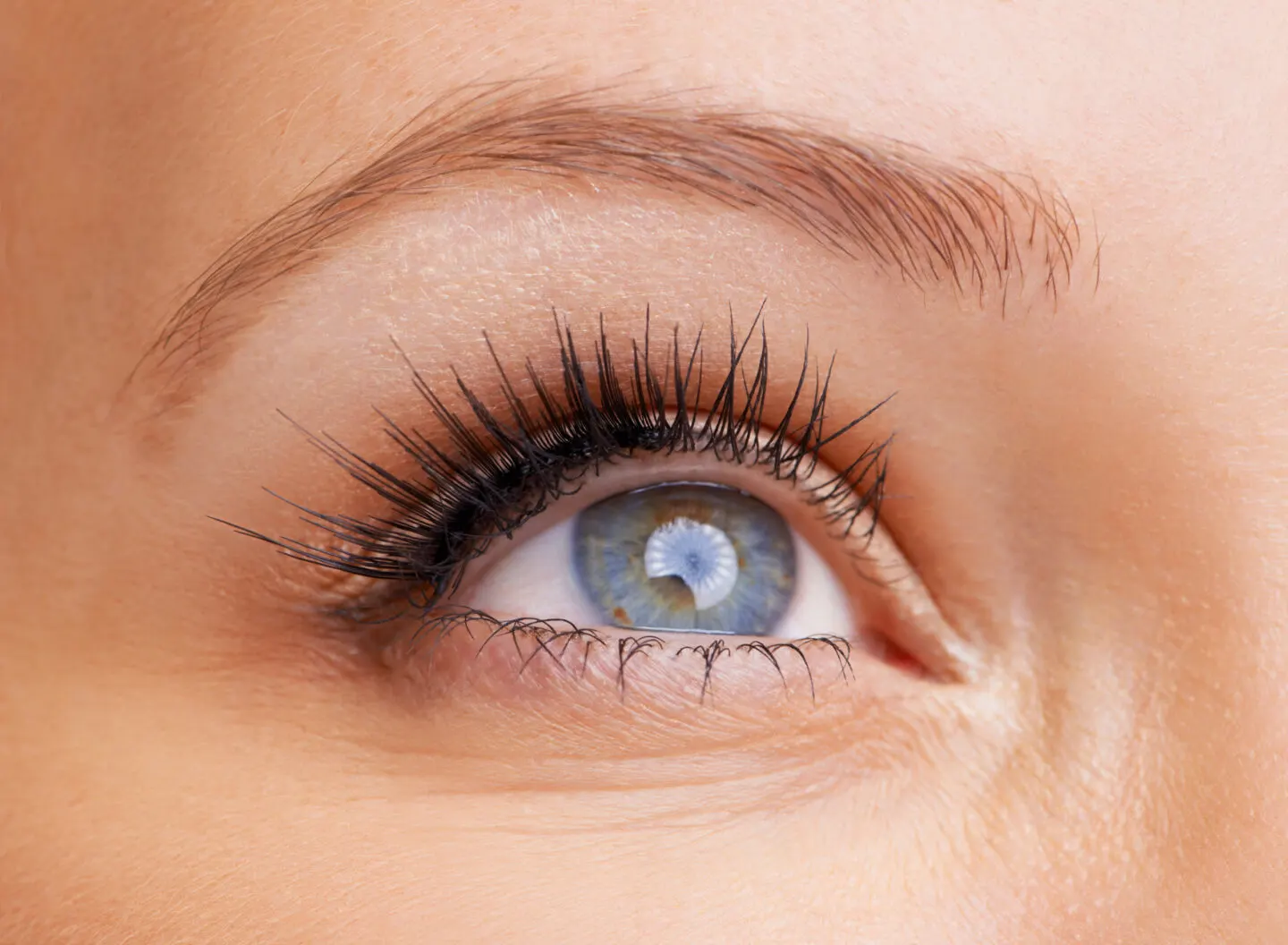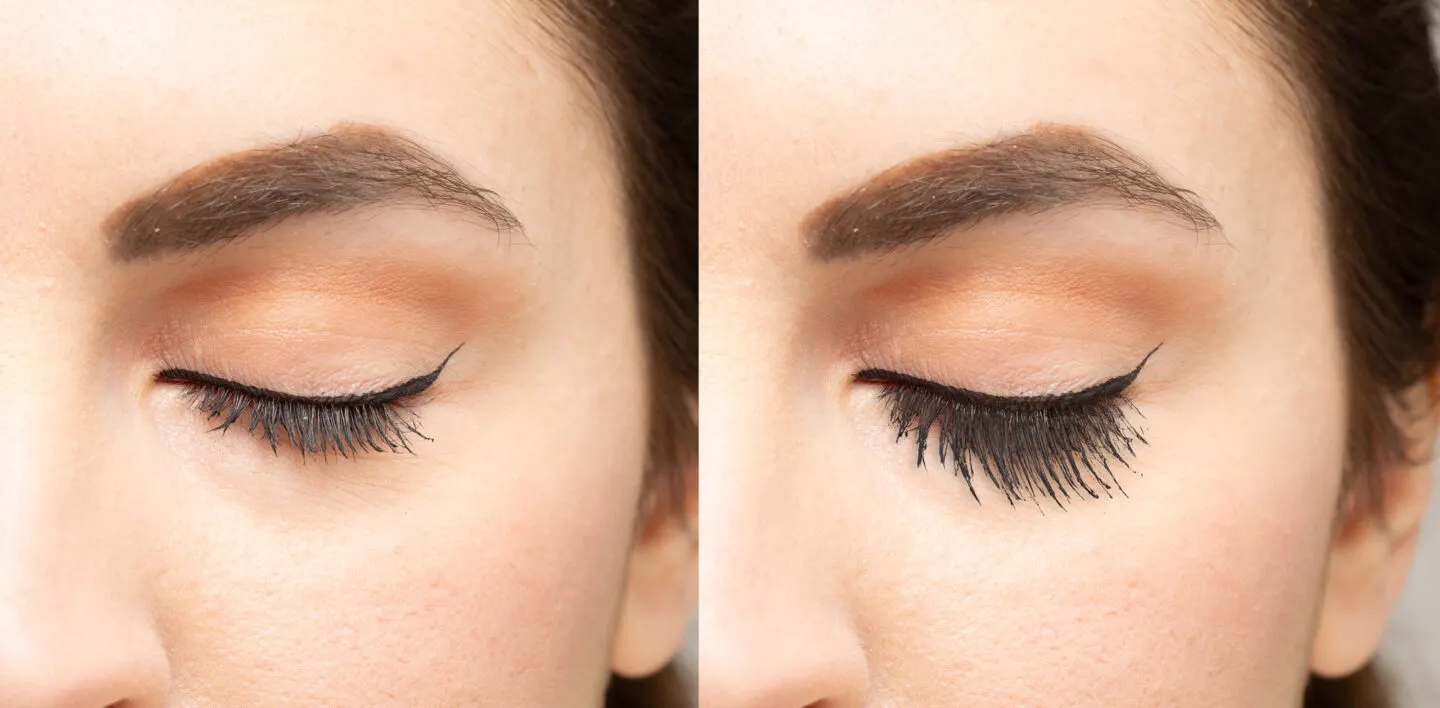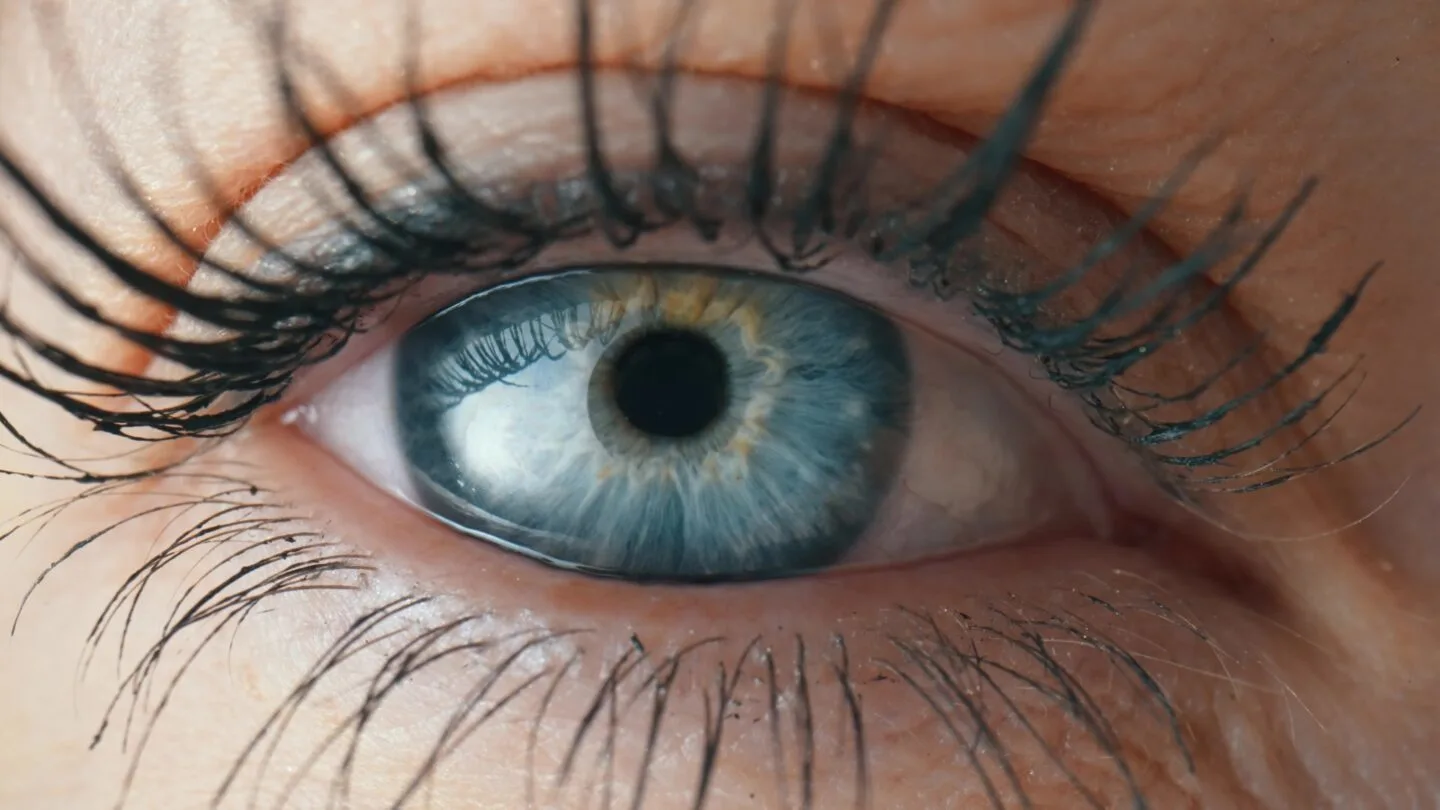Have you ever looked in the mirror and wondered how many rows of eyelashes you have? Do you know what is considered to be normal when it comes to lashes?
Today, I’m going to discuss everything you need to know about eyelashes! We will talk about the different types of lashes, how to take care of them, and how many rows of lashes is considered normal – how to know if you have extra lashes? Keep reading for more information…

What are eyelashes, and what are they made of?
Eyelashes are hairs that grow along the edge of the eyelid. They are made up of cells called keratin, which is also found in hair and nails. The average person has between 100 and 150 lashes on each eye.
Eyelashes serve several important functions. They help to keep dust and other foreign particles out of the eye, and they also help to protect the eye from bright light.
In addition, eyelashes play a role in our emotional lives, as they help to convey expressions like surprise, anger, and sadness.
Although we often take them for granted, eyelashes are an important part of our anatomy.
What is the purpose of having eyelashes?
Have you ever wondered why we have eyelashes? Though they may seem like nothing more than excess hair, they actually serve a vital purpose. Eyelashes help to protect the eyes from dirt, dust, and other small particles.
By sweeping these particles away from the surface of the eye, eyelashes help to reduce irritation and keep the eyes healthy.
Eyelashes help to regulate the flow of tears, keeping the eyes moist and reducing the risk of infection.
Finally, eyelashes play an important role in our sense of sight. The movement of our eyelashes helps to stimulate tears, which keep the surface of the eye lubricated and clean.
This allows light to pass through more easily, providing us with a clear view of the world around us.
How many eyelashes do we have on each eye?
How many eyelashes do you have? The average person has between 90 and 150 eyelashes on each eye.
However, the actual number can vary based on a number of factors, including age, ethnicity, and environmental conditions.
For example, people of Asian descent tend to have more eyelashes than those of European ancestry.
Additionally, eyelash density tends to decrease with age. Babies typically have the most eyelashes, with the average infant having about 200 lashes per eye.
However, by the time a person reaches adulthood, they will have lost some of their lashes due to shedding and breakage.
Nevertheless, even senior citizens usually have at least 70 lashes per eye. In short, there is no definitive answer to the question of how many eyelashes we have on each eye.
Rather, it is a complex issue that depends on a variety of individual factors.
Why do people have different lengths of eyelashes?
Eyelashes come in a wide range of lengths, with the average lash measuring about one-quarter inch long.
However, some people have lashes that are much shorter or longer than this. Lash length is determined by a number of factors, including genetics and age.
For example, older people tend to have shorter eyelashes than younger people. This is because the lashes gradually break and fall out as we age, resulting in a shorter overall lash length.
Finally, some medical conditions can cause a person to have abnormally long or short eyelashes.
For example, people with thyroid disorders or certain cancers may experience changes in lash length.
In short, there is no “normal” length for eyelashes, as they can vary greatly from person to person.

Do you have more eyelashes on your upper or lower eyelid?
Most people have more eyelashes on their upper eyelid than their lower eyelid. This is because the lashes on the upper lid are longer and thicker than those on the lower lid.
Plus, the lashes on the upper lid tend to be more numerous than those on the lower lid.
The exact number of lashes varies from person to person, but the average person has about 150 lashes on their upper lid and 50 lashes on their lower lid.
So, if you’re wondering how many eyelashes you have, chances are that you have more on your upper eyelid than your lower eyelid.
Do all animals have eyelashes?
No, not all animals have eyelashes. In fact, eyelashes are unique to mammals, as they are not found on any other type of animal. Eyelashes evolved to help protect the eyes from dirt, dust, and other small particles.
What is disichiasis? How many rows of eyelashes is normal?
Disichiasis is a condition in which a person has two rows of eyelashes, instead of the usual one row.
This condition is relatively rare, affecting only about one in every 30,000 people. Disichiasis can be caused by a number of factors, including genetics and certain medical conditions.
People with disichiasis often have symptoms such as irritation, redness, and watering of the eyes.
In some cases, the condition can also lead to vision problems. If you think you might have disichiasis, it is important to see a doctor so that they can properly diagnose and treat the condition.
What is acquired distichiasis?
Acquired distichiasis is an rare condition where an extra row of lashes grows from the glands of Zeis, giving a double row effect.
This double row of eyelashes condition is caused by a malfunction in the meibomian gland, which is responsible for producing oils that lubricate the eyelid.
It occurs more frequently with increasing age, and those with a family history of it may also be more prone to developing it.
The extra row of normal eyelashes causes symptoms like eye irritation, watering eyes, and difficulty opening eyes due to excessive rubbing of the eyelashes against the eyeball.
If left untreated, acquired distichiasis can lead to serious eye complications such as scarring, corneal inflammation, or even glaucoma.
Diagnosis and treatment for acquired distichiasis involve plucking out extra eyelashes or using laser surgery to remove them entirely.
Can having extra lashes affect the cornea?
Having an extra lashes disorder has a potential risk is the potential for damage to your cornea, the clear protective layer that covers the front of your eye.
This can occur when an individual has an abnormally long lash which rubs against the cornea, causing irritation and potential swelling. In some cases, this could lead to irritation or infection.
What are double eyelashes?
Double eyelashes are a condition in which a person has two rows of normal lashes, instead of the usual one row.
This condition is relatively rare, affecting only about one in every 30,000 people.
Double eyelashes (second row of lashes) can be caused by a number of factors, including genetics and certain medical conditions.
Did Elizabeth Taylor have double eyelashes?
Many people know Elizabeth Taylor as a Hollywood icon and one of the most beautiful women of her generation.
What they may not know is that she also had a very unique physical feature: two rows of eyelashes. In most people, the upper and lower eyelashes grow in alternating rows, but Taylor’s lashes grew in two neat rows on each eye.
This gave her an instantly recognizable look, and it’s thought to be one of the reasons she was such a successful actress.
What is lymphedema distichiasis syndrome?
Lymphedema distichiasis syndrome is a rare genetic condition caused by mutations in the FOXC2 gene.
It is characterized by abnormally increased numbers of eyelashes (congenital distichiasis) associated with lymphedema in parts of the body, such as the extremities, face, chest and/or abdomen.
As well as these physical features, some people with lymphedema distichiasis syndrome may also be at an increased risk for lymphedema-related complications, including recurrent skin infections, tissue damage and impaired lymphatic function, so good eye care is essential.
How to get rid of double eyelashes?
There are a few ways to get rid of double eyelashes, but the most effective method is electrolysis.
This involves using a small needle to apply an electrical current to the base of the lashes, which helps to break down the hair follicles and prevent them from growing back.
Electrolysis can be performed by a professional, or there are also at-home electrolysis kits available, but be careful in case it causes swelling.
Another common method of getting rid of a double eyelashes eye problem is to carefully pluck them out with tweezers, although that can cause inflammation.
However, this can be time-consuming and may not be effective if the lashes are particularly thick or coarse. Never use epilation for the removal of your extra lashes.
Can you get 3 rows of eyelashes?
No, you cannot get three rows of eyelashes. The condition of having two rows of eyelashes, known as disichiasis, is rare enough as it is.
There is no known medical condition that could cause a person to grow three rows of eyelashes – that would be a lot of extra eyelashes.

Do longer lashes mean you’re more healthy than those with short lashes?
There is no scientific evidence to suggest that people with long eyelashes are more healthy than those with short eyelashes.
Lash length is determined by a number of factors, including genetics and age. So, if you’re wondering whether or not your lashes are normal, there is no need to worry – they probably are. Just be sure to regularly use eye drops, and visit an eye doctor if your eye health ever changes.
How many eyelashes do you lose a day?
The average person loses between one and five eyelashes per day. This is completely normal, as it is part of the natural lash cycle.
However, if you are losing more than five lashes per day, it could be a sign of a medical condition.
Why do eyelashes grow in the wrong direction?
It’s simple physics: your set of eyelashes grow in the wrong direction because they’re subjected to the wrong kind of forces.
When you blink, your eyelids rub your lashes downwards; when you wash your face, water flows downwards; and when you sleep, gravity pulls down on your lashes.
All of these factors work together to cause your eyelashes to grow in a downward direction. But there’s one force that works in the opposite direction: the upward force created by the hair follicle itself.
This force is strong enough to counter the downward forces acting on the lash, but it’s not strong enough to overcome them completely.
As a result, your lashes end up growing in a slightly curved shape, with the tips pointing downwards.
While this may seem like a small difference, it can actually make a big difference in how your lashes look.
In fact, many people believe that curled lashes look more attractive than straight ones.
So next time you’re wondering why your eyelashes are growing in the wrong direction, just remember: it’s not because they’re defective – it’s because they’re following the laws of physics!

Summary
There is no definitive answer to how many rows of eyelashes is normal. However, it is rare to have more than two rows of eyelashes.
The average person loses between one and five eyelashes per day, which is part of the natural lash cycle.
If you are losing more than five lashes per day, it could be a sign of a medical condition.
Eyelashes can grow in the wrong direction due to a number of factors, including gravity and the direction of your blink. However, this is not indicative of a problem with your lashes.

Hi, my name is Gemma, and I’m the owner of MakeupMuddle.com. I’m a true beauty obsessive, and love writing about anything to do with beauty – I have been a beauty writer since 2012.
